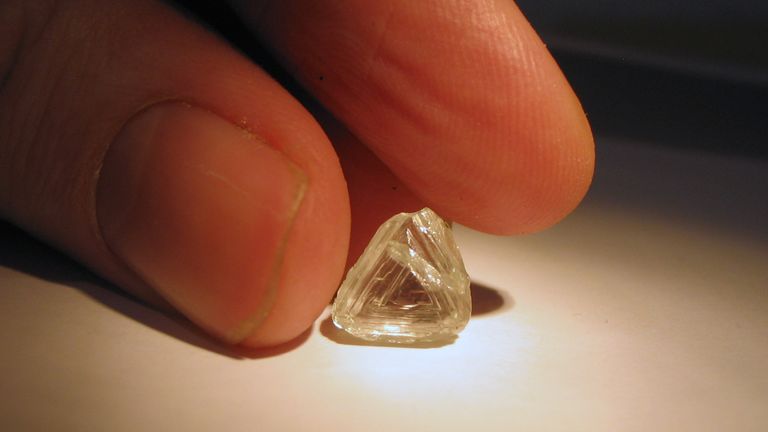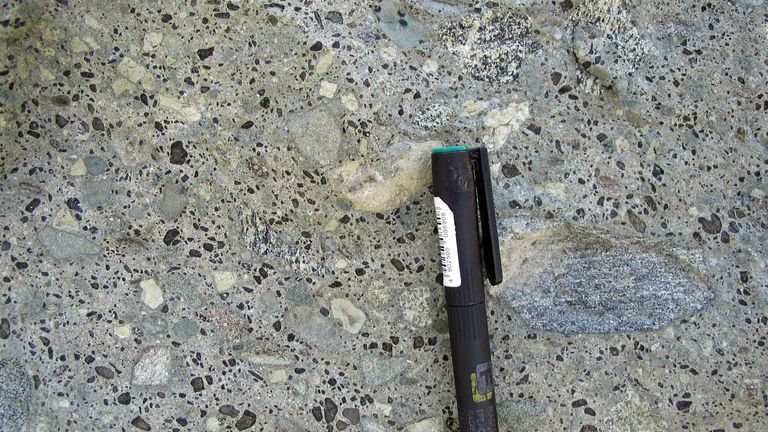Scientific breakthrough may help pinpoint precious diamond mines
Diamond eruptions have been found to mimic the rhythm of the supercontinents, which assemble and break up over time. The most recent was Pangaea, which was made up of every continent that currently exists on Earth.
Thursday 27 July 2023 12:45, UK
Scientists have paved the way for future discoveries of rare diamonds after solving why they "erupt" in the Earth's surface.
The prized jewels, which are hundreds of millions or even billions of years old, have long been known to form under great pressure and are typically found in a type of volcanic rock called kimberlite.
But their route to the surface was more of a puzzle - until now.
A team of researchers from the University of Southampton found the driving force is the breakup of tectonic plates.
These huge slabs of rock, which are chunks of the Earth's crust, force the generation and eruption of diamond-rich magmas from deep inside the planet.
Dr Tom Gernon, associate professor of Earth science at Southampton, said the "cyclical" pattern of these diamond eruptions mimicked the rhythm of the supercontinents, which assemble and break up over time.
The most recent supercontinent was Pangaea, which existed about 335 million years ago and was made up of every continent that currently exists on Earth.
Dr Gernon's team, which also included researchers from Birmingham and Leeds universities, used statistical analysis and machine learning - a field of AI where computers are taught to make predictions based on data - to examine the link between continental break-up and kimberlite formations.
Birmingham's Dr Stephen Jones, the study's co-author, compared it to a "domino effect".
The scientists found most kimberlite volcano eruptions happened 20 to 30 million years after Pangaea broke up, gradually migrating from the edges of continents towards the interiors.
Be the first to get Breaking News
Install the Sky News app for free


They then found the Earth's mantle - the layer between the crust and the core - was disrupted by "rifting", when two tectonic plates move away from each other.
This sees chunks of continental crust sink into the mantle below, removing substantial amounts of rock - tens of kilometres thick - from the base of the continental plate.
Dr Gernon said: "This process brings together the necessary ingredients in the right amounts to trigger just enough melting to generate kimberlites."
More on Sky news:
How Oppenheimer changed the world
Stunning image reveals secrets of how giant plants form
The scientists say their findings help them understand the locations and timings of past volcanic eruptions, and therefore how to locate potential diamond deposits.
The study was published in the journal Nature.


